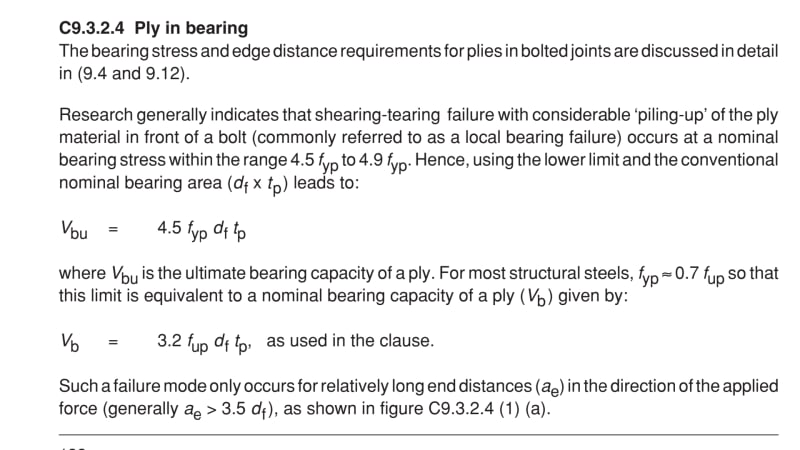dik
Structural
- Apr 13, 2001
- 26,037
The Canadian steel code S16 allows for bearing equal to:
3 x ϕbr x n x t x db x Fu
where ϕbr is 0.8
n is number of fasteners
t is the thickness
db is the bolt dia
Fu is the UTS
I couldn't find anywhere that clarifies that this is the bearing material and not the bolt, and why would the value be so relatively high? I assume the AISC has something similar.
Dik
3 x ϕbr x n x t x db x Fu
where ϕbr is 0.8
n is number of fasteners
t is the thickness
db is the bolt dia
Fu is the UTS
I couldn't find anywhere that clarifies that this is the bearing material and not the bolt, and why would the value be so relatively high? I assume the AISC has something similar.
Dik






